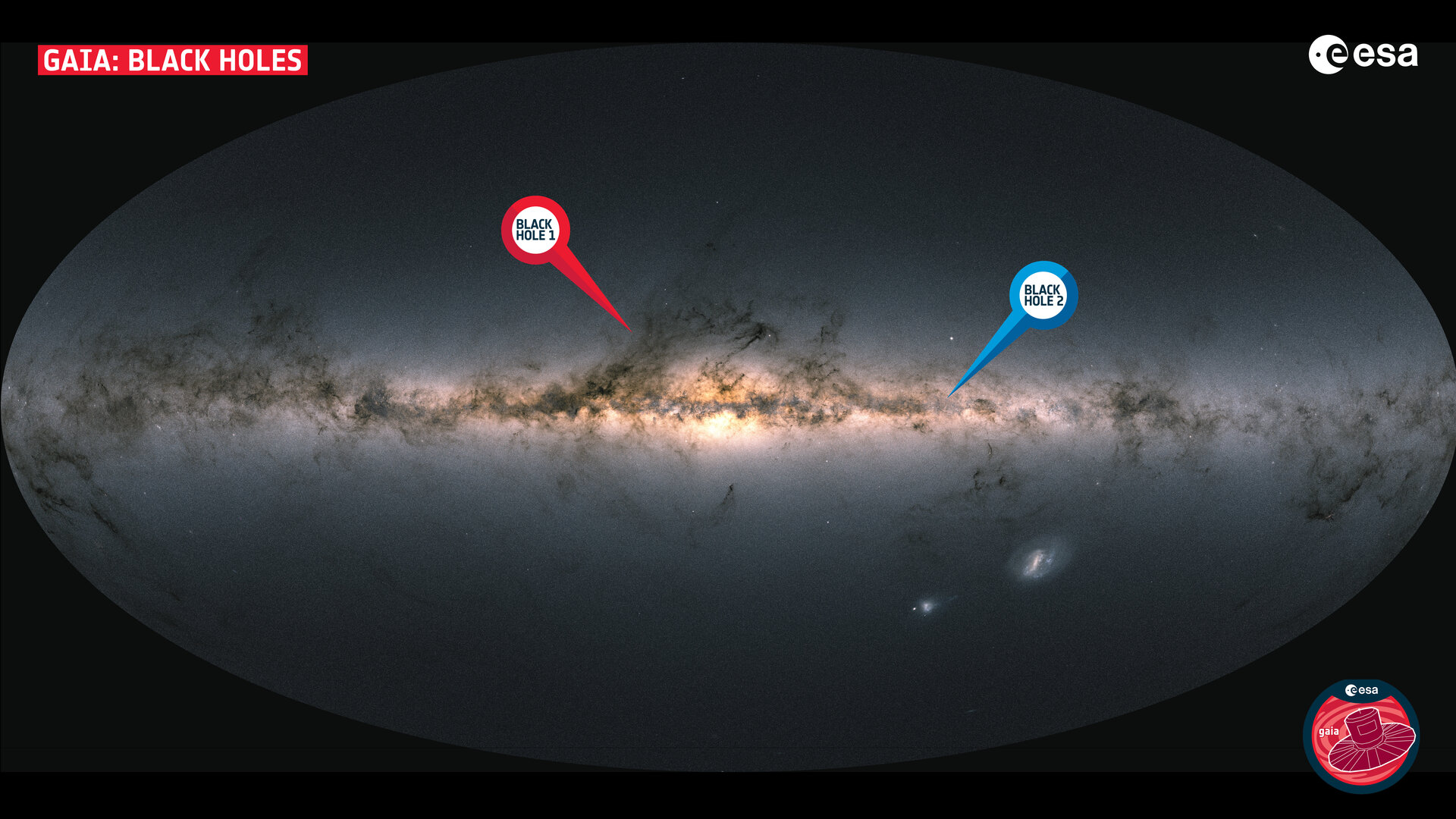Two closest-ever black holes to Earth discovered by ESA's Gaia mission

Astronomers using the European Space Agency's Gaia mission have discovered two black holes that are the nearest known to Earth. The black holes, named Gaia BH1 and Gaia BH2, are respectively located just 1560 light-years away in the direction of the constellation Ophiuchus and 3800 light-years away in the constellation Centaurus.
The new black hole family was discovered by studying the movement of their companion stars. The researchers noticed that some of the stars wobbled as if they were gravitationally influenced by massive objects. Several space and ground-based observatories looked for the objects, but no light was detected, leaving only one possibility - black holes.
The new black holes are truly black as they do not emit any light and can only be detected by their gravitational effect.
According to the researchers, the distance of the stars to the black hole, and the orbits of the stars around them, are much longer than for other known binary systems of black holes and stars.
"What sets this new group of black holes apart from the ones we already knew about is their wide separation from their companion stars. These black holes likely have a completely different formation history than X-ray binaries," explains Kareem El-Badry, discoverer of the new black holes and researcher at the Harvard-Smithsonian Center for Astrophysics in the US and the Max-Planck Institute for Astronomy in Heidelberg, Germany.
"This is very exciting because it now implies that these black holes in wide orbits are actually common in space – more common than binaries where the black hole and star are closer. But the trouble is detecting them. The good news is that Gaia is still taking data, and its next data release (in 2025) will contain many more of these stars with mystery black hole companions in it," says Yvette Cendes who helped discover the second black hole and is an astronomer at the Harvard-Smithsonian Center for Astrophysics in the US.
In addition to Gaia, gound-based observatories including the South African MeerKAT radio telescope were used to confirm this discovery.
1/ 🕳️🕳️ @ESAGaia has discovered the two closest black holes to Earth ever found! This discovery alludes to a new family of #blackholes which is invisible, relatively ‘close-by’ and has stellar companions in large orbits around them ✨https://t.co/6cIfUGMmfU#GaiaMission pic.twitter.com/y2qlJpa67R
— ESA Science (@esascience) March 30, 2023
- READ MORE ON:
- ESA Gaia black hole discovery
- ESA Gaia mission
- black holes
- Gaia BH1
- Gaia BH2










